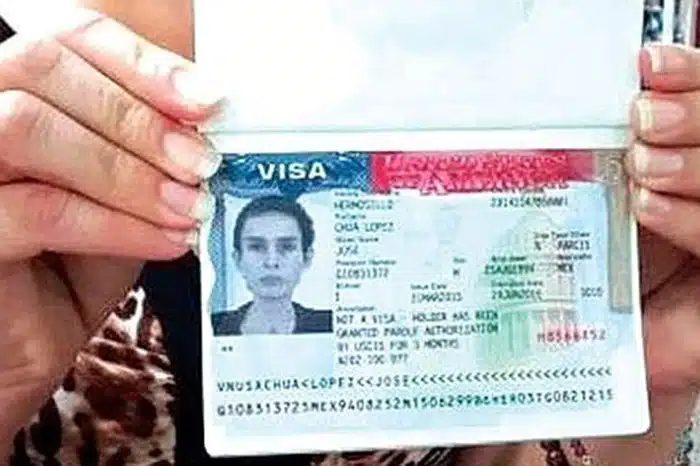Visa Sponsorship 101: How Skilled Immigrants Can Secure U.S. Job Opportunities
Landing a U.S. job with visa sponsorship can feel overwhelming, but with the right approach, it’s completely possible. I’ve seen how skilled immigrants struggle to find employers willing to sponsor them, often because they don’t know where to look or how to present themselves. The process takes patience, strategy, and knowing exactly what employers are looking for.
In this guide, I’ll walk you through the best U.S. work visas, how to find companies that sponsor, and the steps to increase your chances of getting hired. If securing a job in the U.S. is your goal, this is the information that will make the journey clearer and more achievable.
Understanding U.S. Work Visas for Skilled Immigrants
Knowing the right visa options makes job hunting and securing sponsorship easier. The most common U.S. work visas for skilled immigrants include:

H-1B Visa (Specialty Occupations)
- Designed for professionals in fields like IT, engineering, healthcare, and finance.
- Requires a U.S. employer to file an H-1B petition with U.S. Citizenship and Immigration Services (USCIS).
- The visa is granted through a lottery system due to the high number of applicants.
- Valid for up to 6 years, allowing potential transition to a green card.
L-1 Visa (Intra-Company Transfer)
- For employees transferring from a foreign branch to a U.S. office of the same company.
- Available in two types:
-
- L-1A for executives and managers.
- L-1B for employees with specialized knowledge.
-
- Requires proof of employment with the company for at least one year outside the U.S.
O-1 Visa (Individuals with Extraordinary Ability)
- For individuals with exceptional achievements in sciences, arts, education, business, or athletics.
- Requires substantial evidence of recognition in the field, such as publications, awards, or leadership roles.
TN Visa (For Canadians and Mexicans)
- Available under the United States-Mexico-Canada Agreement (USMCA).
- Only applies to certain professional job categories, including accountants, engineers, and scientists.
- Requires proof of qualifications and a job offer from a U.S. employer.
Each visa type has different requirements, so selecting the right one based on skills, experience, and industry is crucial.
How to Find U.S. Employers That Sponsor Work Visas
Join Us on Email Newsletter
Targeting companies that frequently sponsor work visas increases the chances of securing a job offer.
Research Companies That Offer Visa Sponsorship
- Use platforms like MyVisaJobs, H1BGrader, and the U.S. Department of Labor H-1B Database to find employers that regularly sponsor foreign workers.
- Focus on industries with high demand for skilled professionals, such as technology, healthcare, finance, and engineering.
Use Job Boards That Filter for Sponsorship
- LinkedIn, Indeed, and Glassdoor allow job seekers to filter jobs based on visa sponsorship availability.
- H1BGrader and H1Base specialize in listing employers with a history of hiring international workers.
Network with Professionals and Employers

- Join LinkedIn groups related to the desired industry and engage with professionals in the field.
- Connect with recruiters and hiring managers by sending personalized messages explaining qualifications and visa needs.
- Attend industry conferences and job fairs where companies actively recruit international talent.
Apply to U.S. Companies with Global Offices
- Multinational companies like Google, Microsoft, Amazon, and Deloitte frequently transfer skilled employees to the U.S. using L-1 visas.
- Working for a company in another country first can increase the chances of securing a U.S. job transfer.
How to Improve Your Chances of Getting Sponsored
A strong job application increases the likelihood of receiving a visa-sponsored job offer.
Optimize Your Resume for U.S. Employers
- Use a clear, professional resume format tailored to U.S. hiring standards.
- Highlight specialized skills, technical expertise, and experience working with global teams.
- Include keywords related to visa-sponsored jobs (e.g., “H-1B visa candidate,” “STEM skills,” “international experience”).
Write a Strong Cover Letter
- Explain how hiring an international employee benefits the company.
- Showcase experience relevant to the job and demonstrate knowledge of the company’s industry.
- Clearly state work authorization needs while emphasizing skills that make sponsorship worthwhile.
Prepare for Common Sponsorship-Related Interview Questions
Employers often ask about work authorization and visa status. Being prepared helps create a positive impression.
- “Do you require visa sponsorship?” Answer confidently and provide information about the visa type needed.
- “Why should we sponsor you over a U.S. citizen?” Emphasize unique skills and experience that add value to the company.
- “Are you willing to relocate?” Express flexibility and readiness to move to the U.S. for the role.
Gain Additional Certifications to Increase Competitiveness
- Certifications in technology (AWS, Cisco, Microsoft), finance (CPA, CFA), and healthcare (USMLE, NCLEX-RN) improve job prospects.
- Many U.S. employers value specialized training that aligns with job market demands.
Steps to Secure a U.S. Job with Visa Sponsorship
Following a structured process helps improve the chances of getting hired.

Identify Suitable Job Opportunities
- Focus on industries with a shortage of skilled workers, such as IT, engineering, healthcare, and finance.
- Search for jobs that specifically mention visa sponsorship.
Apply to Multiple Positions
- Submit applications to at least 10 to 15 jobs per week to maximize opportunities.
- Tailor each resume and cover letter to match job descriptions.
Network with Employers and Recruiters
- Reach out to hiring managers on LinkedIn and company websites.
- Work with recruiters specializing in international job placements.
Attend Interviews and Discuss Sponsorship Early
- Be transparent about visa needs but focus on the value brought to the company.
- Showcase skills, experience, and readiness to work in the U.S.
Receive a Job Offer and Start the Sponsorship Process
- The employer files a petition with USCIS for visa approval.
- Once approved, attend a U.S. embassy interview and complete visa formalities.
Common Mistakes to Avoid When Seeking Visa Sponsorship
Avoiding these mistakes can significantly improve job search success.
- Applying Without Checking Sponsorship Availability
-
- Some companies do not sponsor visas, so verify before applying.
-
- Ignoring Visa Timelines and Caps
-
- H-1B visas have an annual cap, and applications must be submitted within a specific period.
-
- Failing to Research Employer Sponsorship Policies
-
- Some companies only sponsor certain visa types or require employees to work with them first before sponsoring.
-
- Not Preparing for Visa Interviews
-
- Embassy officials will ask about job details, employer sponsorship, and long-term career goals.
-
- Applying for the Wrong Visa Category
-
- Choosing the right visa based on experience and qualifications is crucial for approval.
-
Securing a U.S. job with visa sponsorship takes strategy, persistence, and preparation. Skilled immigrants who focus on the right employers, optimize their applications, network effectively, and stay informed about visa policies have a higher chance of success. With the right approach, securing a job in the U.S. becomes an achievable goal.

